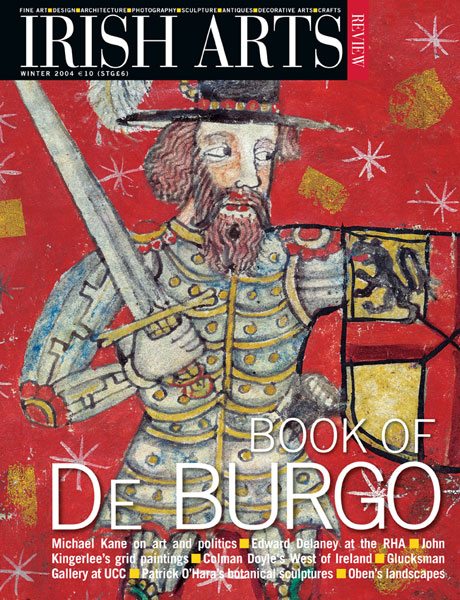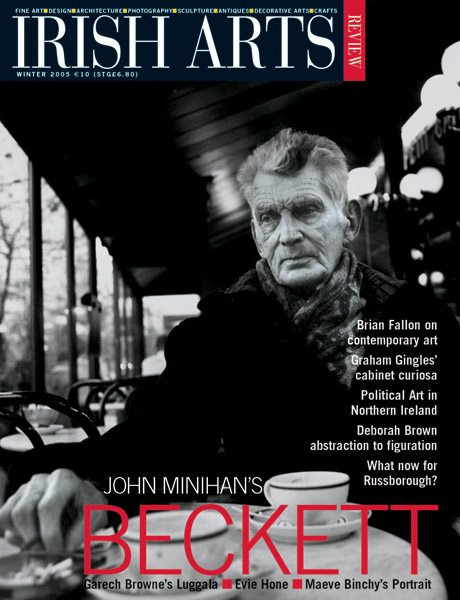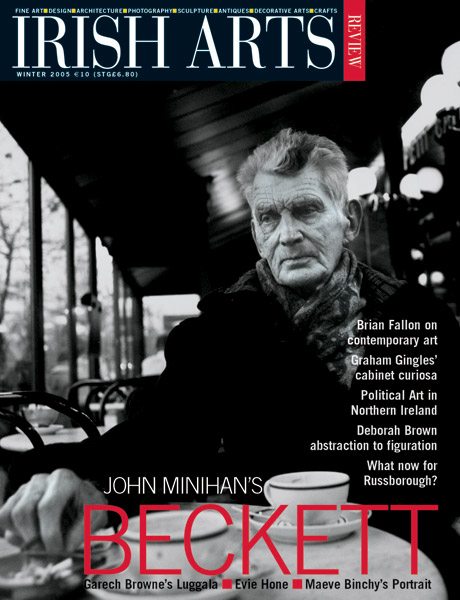
Ten years ago, Desmond FitzGerald considered the future of Russborough in an essay for the Irish Arts Review. We reprint the essay here.
Sergio Beneditti’s catalogue of the exhibition ‘The Milltowns, a Family Reunion‚’ held at the National Gallery of Ireland in 1997, is an invaluable chronicle of Lady Milltown’s generous gift to the National Gallery of many of the most important contents of Russborough. Recently, Anne Kelly in the Irish Arts Review of Autumn 2005 tells the turbulent tale of this bequest between 1887 and 1906. What an extraordinary gathering of family portraits, a masterpiece by Reynolds, and some of the Grand Tour Italian paintings bought in Italy by the 1st and 2nd Earls of Milltown. This includes the superb early Batoni portrait of the 2nd Earl in his fur-lined coat. Sculpture, bronzes and furniture are also part of this amazing bequest.
As is well known Russborough has been the target of a series of disastrous robberies and most of the important paintings bequeathed so generously by Sir Alfred and the late Lady Beit are now safely exhibited in the National Gallery. The Beits bought Russborough in 1951 and what a fortunate day for Ireland this was, as eventually they left their spectacular collection to the National Gallery of Ireland. The Dalys had previously bought the house from the last Earl’s nephew Sir Edmund Turton in 1931. Some remaining furnishings such as the long set of over twenty armchairs remained there to the end of the Dalys‚’ occupancy. A superb scagliola table top by Pietro Belloni of 1750 was found at Russborough by Sir Alfred when he bought the house. It is still there in the hall.
The set of chairs with their claw and ball feet and turned stretchers had upholstered backs in claret-coloured stamped wool velvet which matched the walls of the saloon. The chairs fitted snugly below the high mahogany dado panelling and they could still be seen in-situ when Country Life photographed the house in 1936. Settees and two daybeds ensuite survive between the National Gallery and in an Irish collection. Chairs from this very long set turn up from time to time in the sale rooms, and with a reduced size humpback sofa have been copied for the Kindel Irish Georgian Society furniture line.
Surely it is now time to consider the future of this marvelous place? It would be timely to start to take stock of the situation, consider the future for the viewing public and put an imaginative plan forward to revitalize this rather tired old place
However, the most important original furniture from Russborough are the superb series from rococo mirrors and frames which now grace the old board room of the National Gallery and others hang in the gallery’s house, No. 90 Merrion Square. A pair of oval mirrors are in the drawing room at Áras an Uachtarain. The collection comprises the pair of oval pier glasses in the Áras and a series of rectangular pier glasses, a single one and two overmantle mirrors and two landscape frames. A pair of rectangular pier glasses show the influence of Matthias Locke of 1744 and 1752 by both Locke and Henry Copeland – English designers of the Chippendale period. These dates are exactly the time that Russborough would have been finished for the 1st Earl. The putti heads which appear on the pier glasses and one of the ornamental picture frames harmonize with the coved ceiling by the La Franchini. The grandeur of the Russborough frames with their outspread eagles, their bacchic masks and their Chinese and female heads comprise an astonishing surviving collection. The carving must have been worked in tandem with the stuccadores. This magnificence was in keeping with the splendors of the newly-built Palladian house designed by Richard Castle and completed by the artist-architect Francis Bindon, who had important links with Dublin’s finest carver, John Houghton. An attribution for this carved work to Houghton is a very good possibility, but the pair of oval mirrors look closer to the work of the Dublin mirror-maker John Booker. These craftsmen were all working in Dublin in the 1750s.
A pair of sideboards with elaborately carved aprons decorated with acanthus leaves, flowers and cabochons are a far cry from the sophisticated line of the mirrors. They were made for the dining room and supported the lavish display of plate bought from the London silversmith George Wicks in 1742. These glittering dishes, tureens and so forth would have harmonized well with the baroque/rococo transitional ceiling with its shelves, urns, acanthus and eagles. The dishes are displayed in the National Gallery’s Milltown Rooms.
The Russborough mirrors, furniture and silver are enormously important for understanding the arrangement of mid 18th-century decoration in Ireland. There is a no more complete collection of original furnishings in a major 18th- century house in Ireland. For instance, Castletown only has a few fine remnants of its original contents. Powerscourt was burnt; the Provost’s House has a few items, Malahide likewise. Only Newbridge remains relatively intact, but it was never quite as grand as Russborough. It would be stimulating to carry out a historical exercise in the form of returning these furnishings to Russborough and placing them in their original setting.
The contents of Russborough so sadly divorced from their splendid setting cry out to be reunited in Russborough’s interiors and in the absence of so many of the important Beit pictures could not these furnishings and some of the family portraits be hung and displayed there? Some of the mirrors are obviously far too grandiose for the modest salons of No. 90 Merrion Square.
Russborough is one of Ireland’s top three or four houses and it is in the hands of a Trust created by the generous donors now both no longer with us. Surely it is now time to consider the future of this marvelous place? It would be timely to start to take stock of the situation, consider the future for the viewing public and put an imaginative plan forward to revitalize this rather tired old place. Think of Russborough with many of its original furnishings in their proper placings and some of the Leeson art collection hanging in the rooms that were listed by J.P. Neale in his Views of the Seats of Noblemen and Gentlemen‚Ķ. of 1826. A close cooperation between the National Gallery and the Russborough Foundation is already in place and what amazing results could be achieved with a little imagination.
The educational aspects of this house would come to the fore and being not far from Dublin could surely attract the visiting public in larger numbers. Seminars and teaching of the Irish decorative arts in this setting would be so exciting.
The OPW this autumn has put together an imaginative series called ‘Family Connections: Heritage Houses and Castles through Historic Irish Family Lives‚’, which breathe life into such houses as Heywood, Rathfarnham Castle, Castletown and Emo to mention a few. We need to invigorate our historic houses and we can see such energy bringing life so recently to Farmleigh with its many events.
At this time of the government’s welcome creation of the Irish Heritage Buildings Trust, and Professor Terence Dooley’s Country House & Estates Course at Maynooth. Both could help to make a major rethink possible about the running and display of our country house heritage and these developments would provide a welcome wake-up call. Russborough should well be part of this new enthusiasm.
We invite our readers to support this Appeal by registering their names online at this link.
Desmond FitzGerald, Knight of Glin (1937-2011) was President of the Irish Georgian Society and a member of the National Gallery’s Board of Governors and Guardians. This article was first published in the Winter 2005 edition of the Irish Arts Review.



